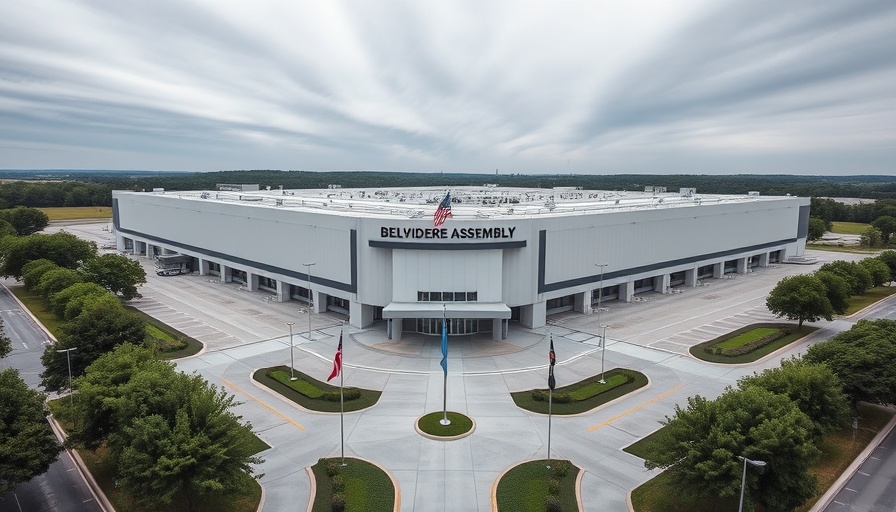
Stellantis Revitalizes U.S. Manufacturing with Historic $13 Billion Investment
In a bold move to solidify its position in the American automotive market, Stellantis, the multinational automaker behind popular brands such as Chrysler, Jeep, and Fiat, announced a staggering $13 billion investment plan aimed at reinvigorating production and expanding its workforce in the United States. This unprecedented financial commitment marks Stellantis’ largest investment in U.S. history and comes in the wake of shifting market dynamics that challenge traditional auto manufacturing.
Driving Economic Growth and Job Creation
CEO Antonio Filosa, who recently stepped into the leadership role, emphasized that the plan would generate 5,000 new jobs, particularly focusing on plants located in Michigan, Illinois, Ohio, and Indiana. Notably, the Belvidere plant in Illinois, which had been shuttered in 2023, will be revitalized to produce the Jeep Cherokee and Jeep Compass, contributing approximately 3,300 jobs alone. As part of the investment strategy, Stellantis intends to introduce five new vehicle models and upgrade existing ones, aiming for a remarkable 50% increase in U.S. production over the next few years.
The Role of Tariffs and Market Challenges
Amidst the backdrop of intensified tariffs under the Trump administration, which Stellantis has claimed would cost them nearly $1.7 billion this year, the investment plan serves not only to boost production but also to traditionally protect against financial volatility associated with international trade policies. Historical context shows that major U.S. automotive manufacturers have had to navigate the turbulent waters of fluctuating tariffs on imported vehicles and components, making local production a significant strategy for mitigating potential losses.
Sustainable Manufacturing in the Modern Age
Stellantis' decision also reflects a broader industry trend towards sustainability, as more automotive giants pivot their resources towards electric vehicle (EV) production, which has become a critical focus for profitability and public demand. Despite the ongoing pressure to shift towards EVs, Stellantis is committed to balancing its portfolio by maintaining strong production levels for traditional gas-powered vehicles while also investing in future-forward technologies.
What This Means for American Consumers
For consumers, this investment could translate into a renewed infusion of competitive models available in the U.S. market, as Stellantis aims to enhance its lineup. The anticipated improvements in production capabilities may also lead to better pricing structures as the company addresses previous concerns regarding excessive vehicle costs compared to rivals. By creating a more competitive environment, Stellantis can potentially capture a larger market share, benefiting both the company and consumers who are seeking quality and value.
Local Impact: The Workforce Angle
The manpower aspect of this investment is crucial, not only for the direct jobs created but also for the ripple effect on local economies surrounding manufacturing facilities. According to Filosa, an additional 20,000 jobs could blossom through supplier companies supporting the renewed Stellantis production lines. This multiplier effect is significant, illustrating how revitalizing local manufacturing can sustain entire communities and bolster the American economy.
Future Prospects: Challenges Ahead
While the announcement of this investment has generated optimism among workers and analysts alike, challenges remain. Moody’s recent downgrade of Stellantis' rating reflects ongoing market pressures in Europe, combined with the financial implications of escalating tariffs on imported automotive components. These external economic pressures could impact Stellantis’ ability to deliver on its ambitious growth targets.
The Path Forward
As Stellantis moves forward with its plans, the focus will be on executing its investment strategy while navigating the complexities of the automotive industry landscape. With Filosa's leadership and commitment to strengthening the U.S. market presence, Stellantis may well transform challenges into opportunities, paving the way for economic growth and technological advancements in the automotive sector.
The automotive industry is evolving, and so too is Stellantis. The company’s historic investment is a proactive step toward addressing market demands and solidifying its future in one of its most critical regions. Stay tuned as Stellantis embarks on this transformative journey.
 Add Row
Add Row 
 Add
Add 


Write A Comment